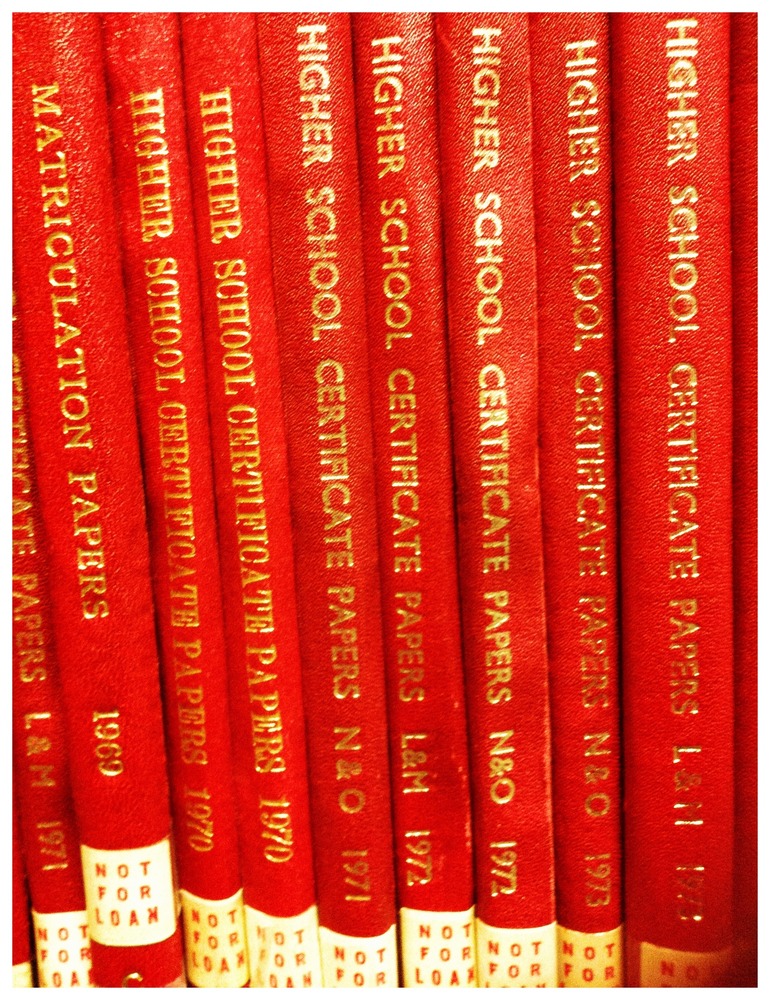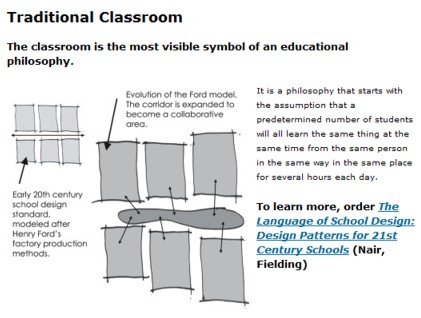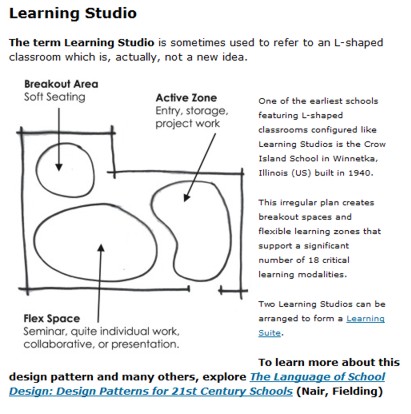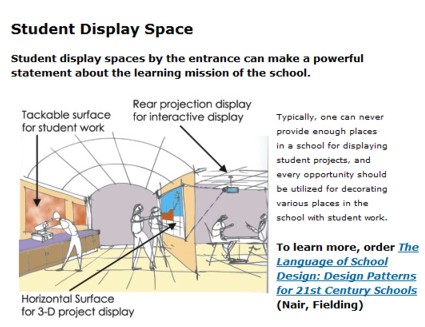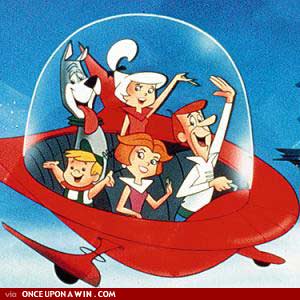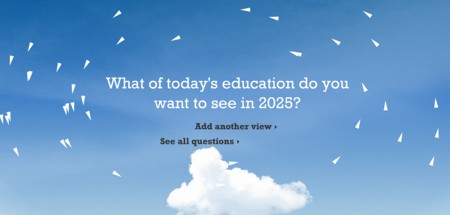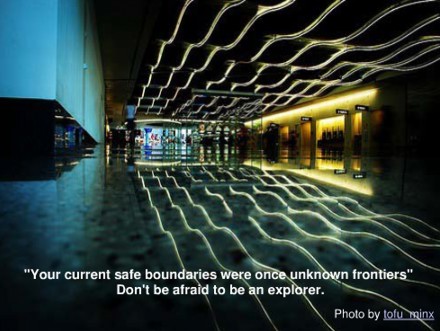 Photo via @jennyluca as part of an ebook Field Guide for Change Agents
Photo via @jennyluca as part of an ebook Field Guide for Change Agents
At the end of last year our school committed to embracing Web 2.0 technologies, and some teachers have begun to explore the potential of blogs, wikis and other platforms for teaching and learning. Others are still either reluctant, don’t see the relevance for their teaching, or consider the challenges in supporting Web 2.0 technologies greater than the benefits.
More and more often I find myself wondering how it is that educators can have such a different view of what education is about, and which skills are more important to students for their future. And how can we talk about learning outcomes before we procure for ourselves a comprehensive and consistent picture of the kind of world in which our students will be working and living? If we don’t inform ourselves, aren’t we way off the mark and therefore failing our students?
Why should we use external blogs, wikis, flickr, and other cloud-based applications? Why is it important to connect students in their learning with each other and with those outside their school? In answering these questions for myself and for others, I thought I’d investigate research into future trends which affect education and the world of work.
Recently I came across an article via Will Richardson in Twitter, Defining the big shift by John Hagel on his website Edge perspectives with John Hagel. John identifies trends which support a move away from teaching content and toward facilitating networked learning:
We are moving from a world where the source of strategic advantage was in protecting and efficiently extracting value from a given set of knowledge stocks – what we know at any point in time… Finding ways to connect with people and institutions possessing new knowledge becomes increasingly important. Since there are far more smart people outside any one organization than inside, gaining access to the most useful knowledge flows requires reaching beyond the four walls of any enterprise.
The greatest economic value will come from finding ways to connecting relevant yet diverse people, both within the firm and outside it, to create new knowledge. They do this best by addressing challenging performance requirements that motivate them to get out of their comfort zone and come up with creative new approaches that generate more value with fewer resources.
From transactions to relationships
The transactional mindset undermines the ability to build long-term, trust based relationships. And in the absence of those relationships it becomes almost impossible to effectively participate in the knowledge flows that matter the most. It is very difficult to get diverse people to come together and constructively engage around challenging performance issues by sharing their tacit knowledge unless long-term trust-based relationships already exist. Once again, since the most valuable knowledge flows are distributed well beyond the boundaries of the firm, these trust based relationships must also extend into broad, scalable networks that literally span the globe.
And so, relationships and connections with a global network are recommended. Isn’t this the whole point of Web 2.0 technologies since they enable these connections and provide a community of learners?
The Horizon Report 2010 is a ‘qualitative research project established in 2002 that identifies and describes emerging technologies likely to have a large impact on teaching, learning, or creative inquiry on college and university campuses within the next five years’. It identifies key trends resulting from changes in technology:
People expect to be able to work, learn, and study whenever and wherever they want to. Life in an increasingly busy world where learners must balance demands from home, work, school, and family poses a host of logistical challenges with which today’s ever more mobile students must cope. A faster approach is often perceived as a better approach, and as such people want easy and timely access not only to the information on the network, but to their social networks that can help them to interpret it and maximize its value. The implications for informal learning are profound, as are the notions of “just-in-time” learning and “found” learning, both ways of maximizing the impact of learning by ensuring it is timely and efficient.
And further:
The work of students is increasingly seen as collaborative by nature, and there is more cross-campus collaboration between departments. While this trend is not as widespread as the others listed here, where schools have created a climate in which students, their peers, and their teachers are all working towards the same goals, where research is something open even to first year students, the results have shown tantalizing promise. Increasingly, both students and their professors see the challenges facing the world as multidisciplinary, and the need for collaboration great. Over the past few years, the emergence of a raft of new (and often free) tools has made collaboration easier than at any other point in history.
It concerns me that many of us are still functioning in the very old ways of teaching and learning. What percentage of teachers, principals and deputy principals, heads of faculty, heads of IT, have read The Horizon Report 2010?
One of the main arguments against Web 2.0 applications, such as blogs, nings, flickr, etc. is that resources can be more efficiently provided and shared on the school’s intranet, and that this way is safe and easier to control. However, according to the Report:
A growing emphasis on collaboration in education — and an increasing recognition that collaboration is the norm in many modern workplaces — has led more teachers to seek tools to facilitate group interaction and teamwork in their classes. .. Collaborative environments provide the means for students to work with peers both local and distant, practice creative teamwork, and develop peer relationships.
Last year I was involved in a pilot project for our school in the form of a ning which supported a year 7 English class. Instead of writing for their teacher alone, the ning provided transparency in discussion and the sharing of writing which sometimes took place in class or otherwise at home in the students’ own time. It also enabled a connection with two Australian authors, Allan Baillie (whose book we were studying) and Michael Gerard Bauer, who provided individual feedback to students’ questions and contributions specific to the class’s needs. This experience made real for us precisely what the research has shown:
The common features that unite collaborative environments are that multiple people can work within them at once; that users can leave evidence of their thoughts, and reflections on the thoughts of others; and that they can support users in any location at any time.
This year a few more teachers have expressed an interest in this new kind of learning, and so I’ve been happy to set up these Web 2.0 learning environments which not only enhance peer interaction but also provide opportunities to connect with people and classes outside the school, even in other countries. A ning I created for Year 12 Literature sparked hours of engaged and rich discussion amongst the students in their own time and going late into the night. Students obviously didn’t consider this ‘work’ and at one point a student remarked, ‘Hey, I just realised I’m doing homework!’
I’m also collaborating with a teacher at school and two overseas educators and their students, one from Florida, USA, and the other from Finland, in a project which operates entirely in Flickr. I’m excited about the global connections and conversations which will be created through this project.
Collaborative environments of all kinds extend the classroom, eroding geographic and time limitations that used to constrain academic interactions. Students can work on group homework assignments with their peers whether or not they are able to get together physically, and can receive feedback and coaching from teachers outside of school hours, if both parties wish.
Collaborative environments foster teamwork and collaboration, but students can also develop individual skills in such spaces. By practising critical thinking in a more or less public forum, students can benefit from seeing what their peers have to say and from critiquing each other’s work. In a world where factual information exists side by side with incorrect or misleading statements and opinions stated as facts, students must learn to critically examine what they see and hear. Collaborative environments provide workspaces in which such activities may take place in an open, constructive way, linked to classroom content.
The Year 12 Literature ning, although in its early stages, provides evidence of such a collaborative environment which becomes the space where knowledge and understanding is constructed in an open, collaborative way. The students develop an understanding through the conversation which is supported by the teacher but which also takes off as a result of students’ own interaction.
Collaboration in an in-class setting presents teachers with the challenge of capturing and managing ideas that often come and go in student discussions at a very fast pace. Such dialog is beneficial to students and supports constructivist learning goals, but assessment can be difficult in real time. Collaborative environments can be used to record such conversations in various ways, so that both teachers and students can revisit and review discussions throughout the school year. Blogs and wikis are ideal means for this.
What better way to revise or collect material for an essay than referring to the conversation archived in the relevant space on the ning? And how much richer is this discussion if it includes people outside the walls of the classroom, even across the other side of the world?
Online collaborative environments invite global initiatives… Students working in collaborative environments also have opportunities to connect with experts, professionals, researchers, and others beyond their classroom walls.
It’s not just students but teachers who benefit from these new ways of learning. My own online experiences convince me of the unparalled advantages of collaborative environments.
The benefits of collaborative environments extend to professional interactions for teachers as well. Shared professional spaces create opportunities for teachers to dig deeper, ask questions of their colleagues, explore projects that others are doing, and engage in ongoing professional development wherever they happen to be. Classroom 2.0 is a community of nearly 20,000 teachers that is supported by the Ning environment; the teachers can join interest groups within the larger community, post and respond to questions, share links, and take part in deep discussions about integrating emerging web technologies into the practice of teaching.
And if you think that Facebook or similar social networks are just for superficial chat, then think again:
The value of online communication tools goes well beyond social interaction. Access to these tools gives students an opportunity to experience learning in multiple ways, to develop a public voice, to make connections with others around the world, and to compare their own ideas with those of their peers.
Having moved to Web 2.0 platforms such as Twitter, nings, Facebook, etc., for my own professional learning and networking, I realise that learning is not something that can be limited to a designated space or time; it often happens when you least expect it.
The best moment to teach a student something is the moment they are curious about it — but what about when that moment happens outside of classroom hours? Online communication tools create opportunities for “the teachable moment” even if students are at home, at the mall, on a field trip, or anywhere else.
Anytime communication also helps make students available to teachers when needed. Teachers can manage classroom activities even outside of classroom hours through synchronous, two-way online communication that can provide time-sensitive information about projects and assignments and reach multiple students at once.
The challenges which face schools today are not only relevant to teachers and principals, but also to those who support the IT infrastructure.
The technologies we use are increasingly cloud-based, and our notions of IT support are decentralized. The continuing acceptance and adoption of cloud-based applications and services is changing not only the ways we configure and use software and file storage, but even how we conceptualize those functions. It does not matter where our work is stored; what matters is that our information is accessible no matter where we are or what device we choose to use.
Just this weekend our school server has been down, and teachers have been unable to access resources on the school intranet. This is where cloud-based applications are advantageous.
I apologize for the lengthy post, but it’s difficult to be selective. I’ve written this out for my own benefit, to have a clearer and more comprehensive understanding of the value of Web 2.0 applications. Perhaps someone else will also find this useful.
The Horizon Report 2010 can be downloaded as a pdf here.

